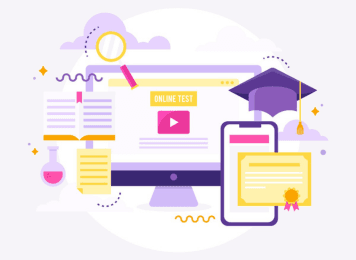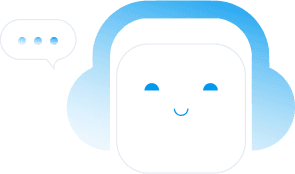Software development
Web development
Mobile app development
UI/UX Design
Data analytics
Security practices
Performance optimization
Building an Effective Custom LMS: A Practical Guide for Startups in the Educational Tech Space
Iliya Timohin
2024-11-20
In today’s e-learning landscape, speed and accessibility are pivotal. By using AMP (Accelerated Mobile Pages) for marketing, educational tech startups can optimize their custom Learning Management Systems (LMS) for faster page loads and improved engagement. AMP helps create pages that load almost instantly on mobile devices, making content accessible and engaging for users on the go. For LMS platforms, especially in educational contexts where a large portion of users are mobile-dependent, fast page loads mean reduced bounce rates and higher engagement. Implementing AMP for LMS landing pages and course previews allows students and educators to swiftly access content without delays, which enhances user satisfaction and retention.

Leveraging AMP Marketing to Boost Engagement for Custom LMS Solutions
To effectively leverage AMP marketing for your LMS, consider prioritizing your most viewed pages or content-heavy sections to be AMP-compliant. This approach can boost your search engine ranking while improving user experience, both of which are essential for increasing visibility and attracting new users in the competitive e-learning space.
Mobile App Development Essentials for Scalable Learning Management Systems
Mobile app accessibility is essential for modern e-learning platforms, as many students prefer engaging with content on their smartphones. Developing a scalable, efficient mobile app is key to expanding your LMS's reach and making learning accessible anytime, anywhere. Here are some core principles of mobile app development that every custom LMS platform should incorporate:
- User-Centric Design: Ensure the app interface is intuitive and responsive, enabling users to navigate easily and focus on learning without technical distractions.
- Scalability and Reliability: Integrate robust back-end architecture that can handle increasing numbers of users, particularly for quizzes, live sessions, and collaborative tools that require real-time interaction.
- Offline Access and Syncing: Allow users to download materials and access them offline, a feature that supports users in low-connectivity regions and enhances engagement.
- Push Notifications and Reminders: Keep learners engaged by sending relevant updates, course reminders, or motivational messages, which can significantly reduce dropout rates.
Building a mobile app with these essentials ensures that your LMS can grow alongside your user base while maintaining performance and accessibility.
Designing Custom LMS: Bridging Educational Technology and User Experience
Creating an LMS that combines educational technology with a seamless user experience is crucial for engaging students and educators alike. The effectiveness of a custom LMS hinges on its ability to make learning intuitive and accessible. Here’s how to bridge educational technology with UX :
- Interactive Course Design: Enable features like drag-and-drop, gamified quizzes, and interactive video modules that make learning more engaging.
- Personalized Learning Paths: Design adaptive algorithms that adjust to the learner’s progress and suggest content or assessments tailored to their level and learning pace.
- Feedback and Analytics: Integrate real-time feedback tools and robust analytics so educators can track progress and students can identify areas for improvement.
- Streamlined Interface: Design a clean, distraction-free interface to encourage focused learning and provide easy access to essential tools and resources.
This thoughtful design fosters active participation, enabling users to take ownership of their learning journeys and boosting overall learning outcomes.
Choosing the Right Educational Software to Power Your E-learning Platform
Educational software forms the backbone of any custom LMS. Selecting the right software requires attention to scalability, compatibility, and ease of integration. Here are the top factors to consider:
- Scalability: As your user base grows, your LMS should be able to accommodate more content, users, and features without performance lags.
- Cross-Platform Compatibility: Ensure that the software supports multiple devices and browsers so users can access learning materials from any platform.
- Data Security: Choose software that prioritizes data privacy and security, particularly when dealing with sensitive educational data.
- Integrative Capabilities: Opt for software that seamlessly integrates with other e-learning platforms and tools, such as video conferencing apps, digital libraries, and analytics tools.
- User Support and Documentation: Reliable customer support and thorough documentation are crucial for troubleshooting and ensuring smooth operation as your LMS evolves.
Selecting the right software will not only enhance your LMS’s performance but also provide a solid foundation for introducing new features in the future.
Maximizing Impact with E-learning Platforms and Custom LMS for Modern Education
In the age of personalized and diverse learning, a custom LMS can drive more impactful educational experiences by catering to unique teaching methods and learning paths. Here are some strategies to maximize the impact of your LMS in the education sector:
- Support for Diverse Teaching Methods: Include modules that support a range of teaching styles, from lecture-based learning to project-based assessments and collaborative work.
- Trackable Progress and Adaptive Feedback: Enable detailed progress tracking so that educators and students can monitor performance, assess skills, and adjust learning paths based on real-time feedback.
- Advanced Assessment Tools: Use assessments like quizzes, self-evaluations, and peer feedback to build a well-rounded evaluation framework that suits different learning preferences.
- Accessibility and Inclusivity: Make sure your LMS is accessible to all students, including those with disabilities, by implementing screen-reader compatibility, keyboard navigation, and closed-captioning.
By focusing on these LMS features, startups can deliver a more impactful educational experience that adapts to diverse learning needs, thus positioning themselves as leaders in the e-learning industry.

Conclusion
For startups venturing into educational technology, building an effective custom LMS can drive significant value and engagement. By leveraging AMP marketing, investing in scalable mobile app development, prioritizing user experience, selecting robust educational software, and incorporating diverse learning support, your team can create a dynamic and flexible LMS that meets the demands of today’s learners.